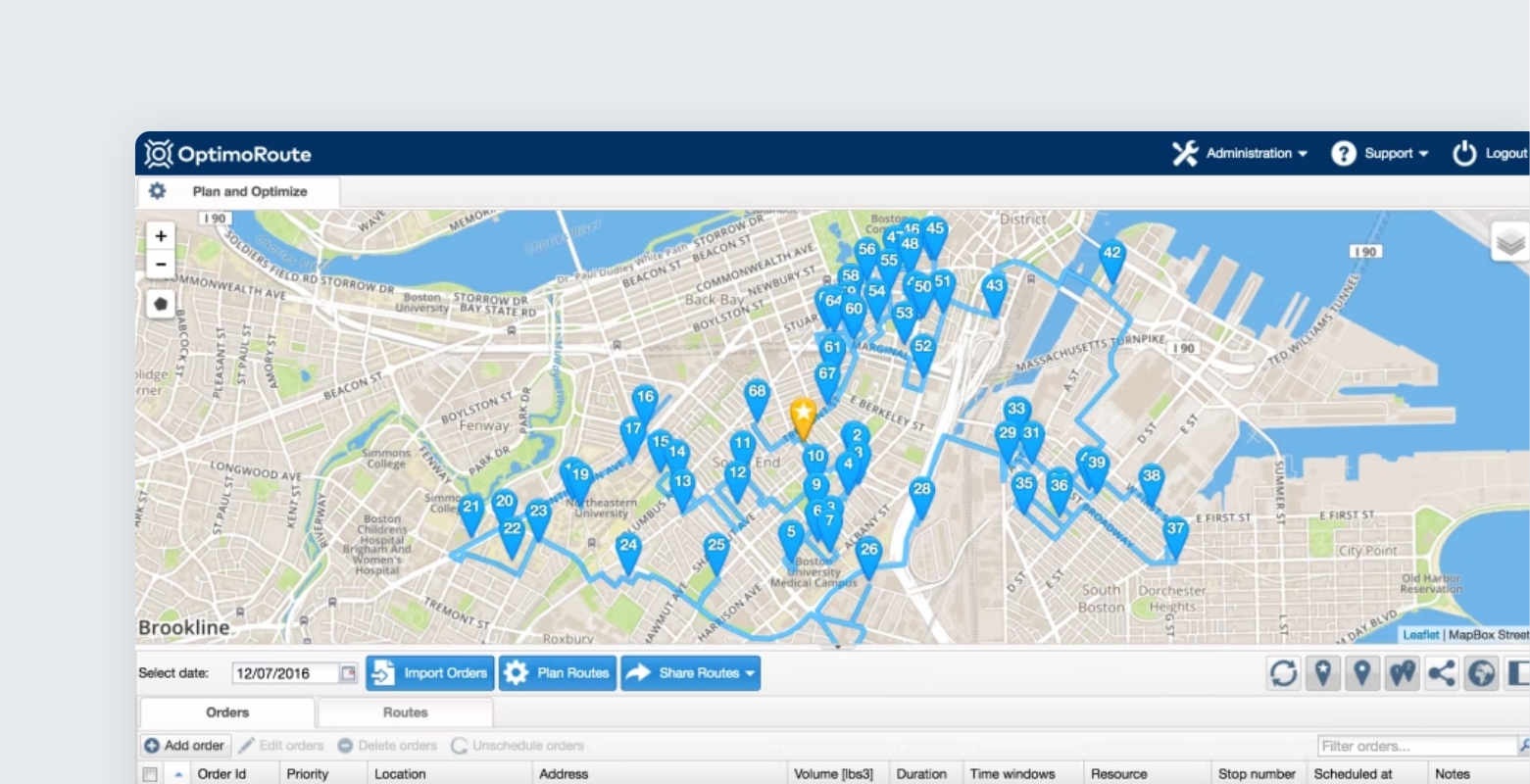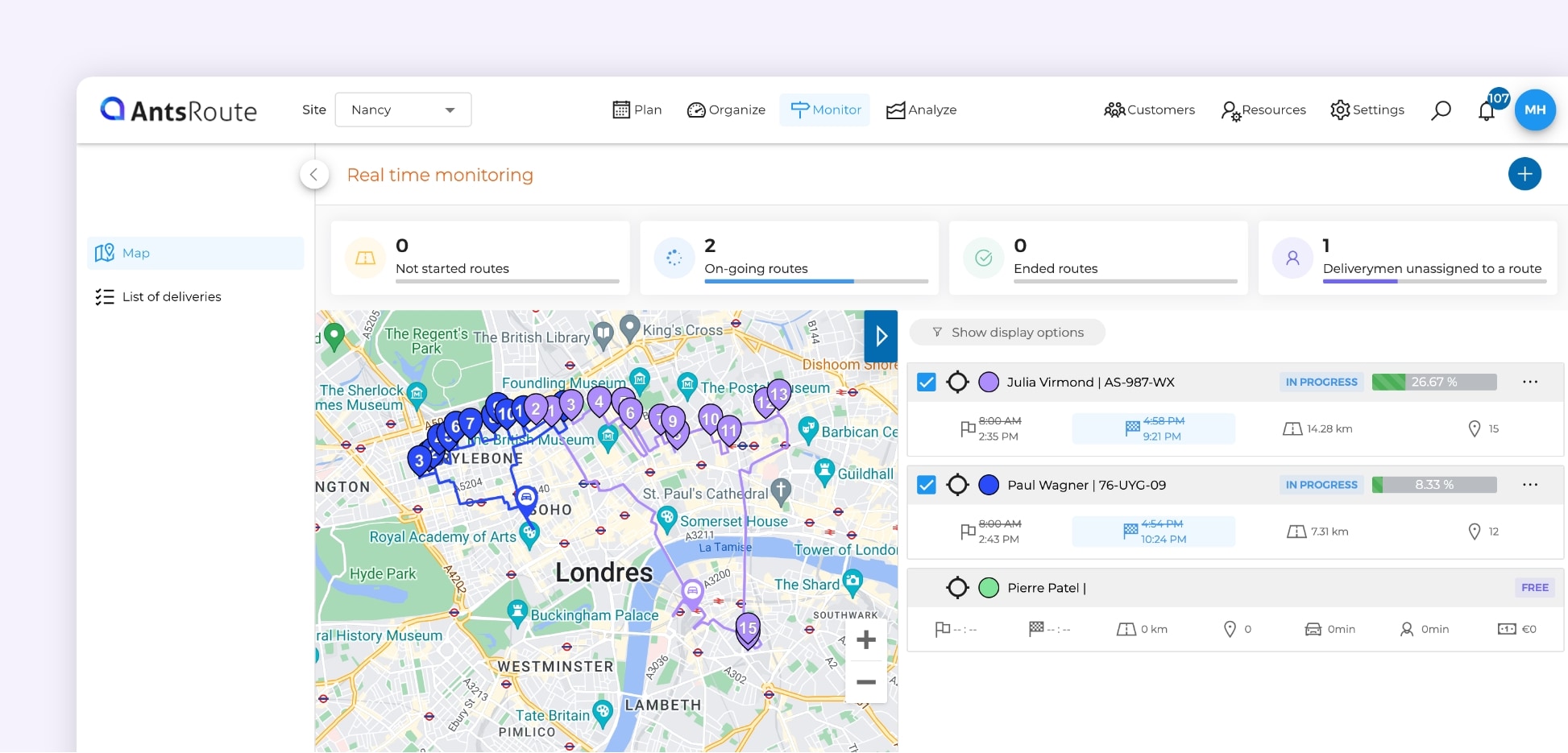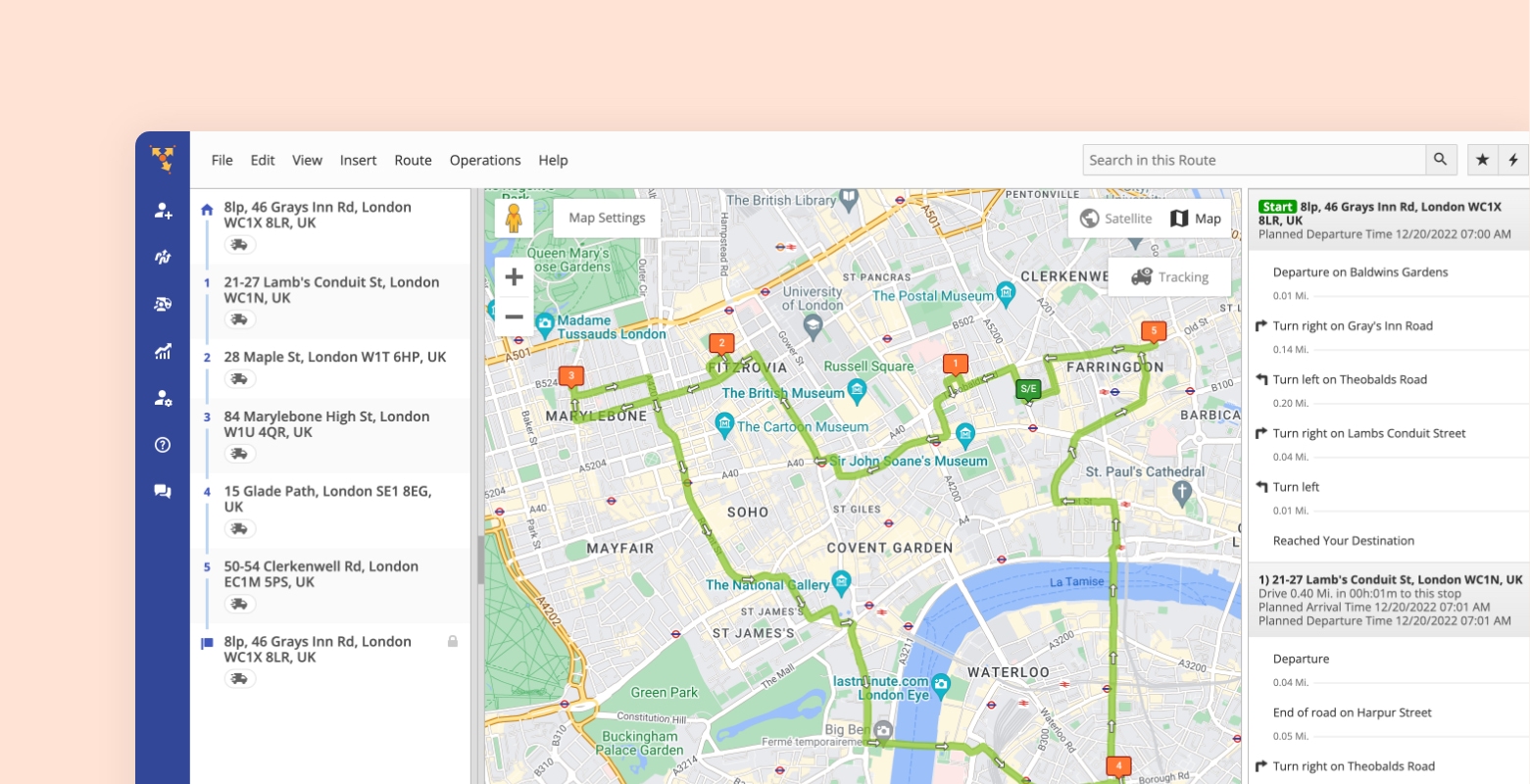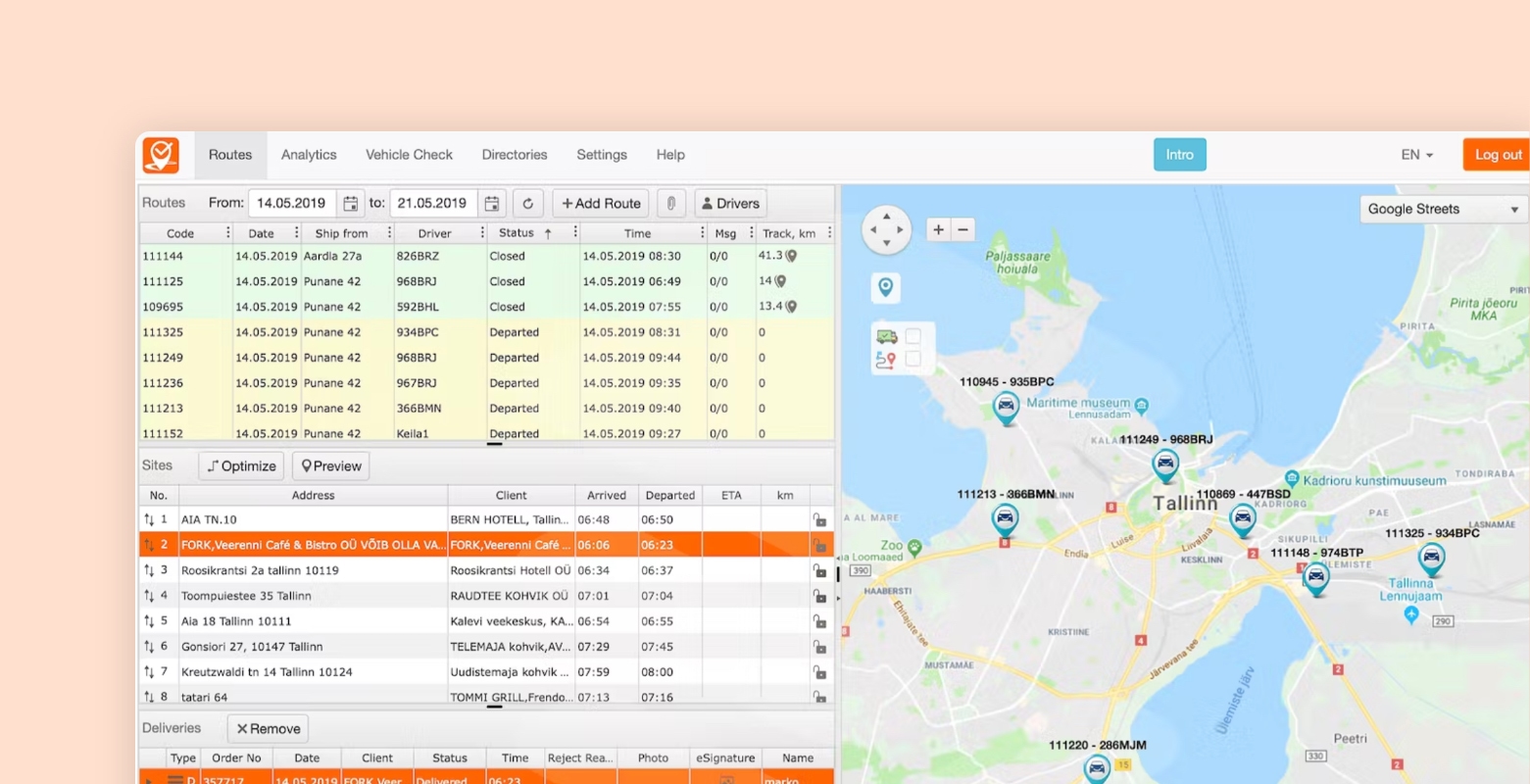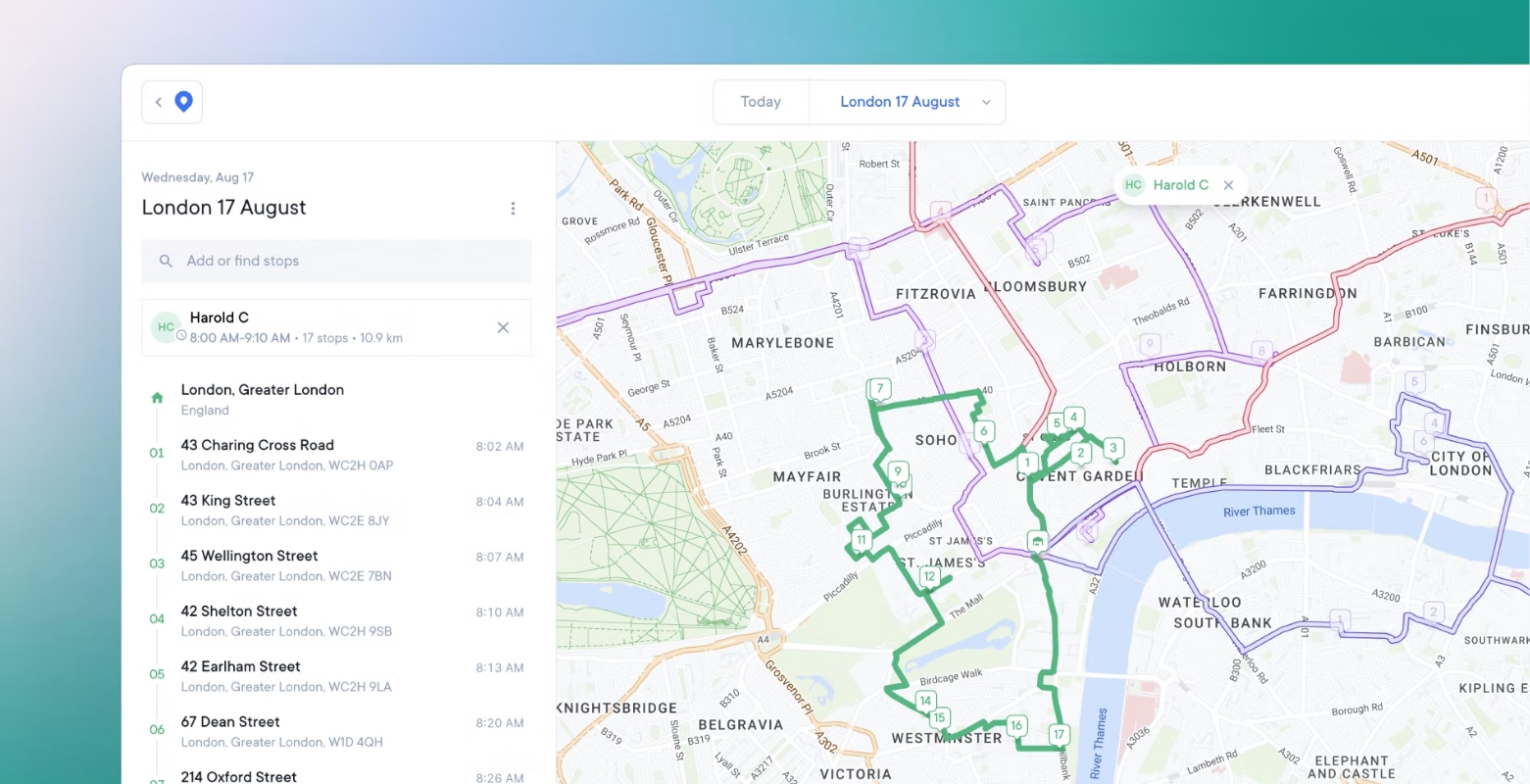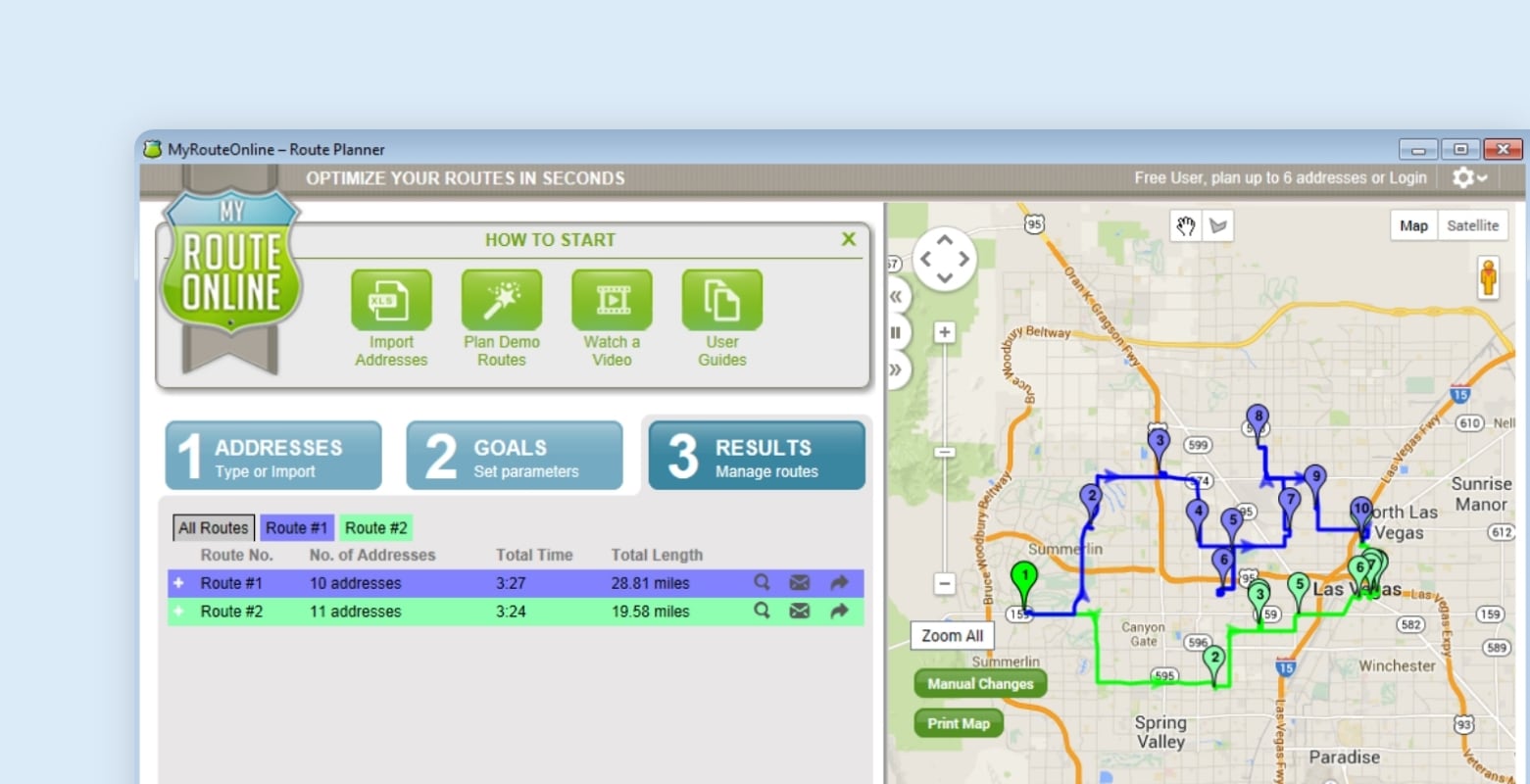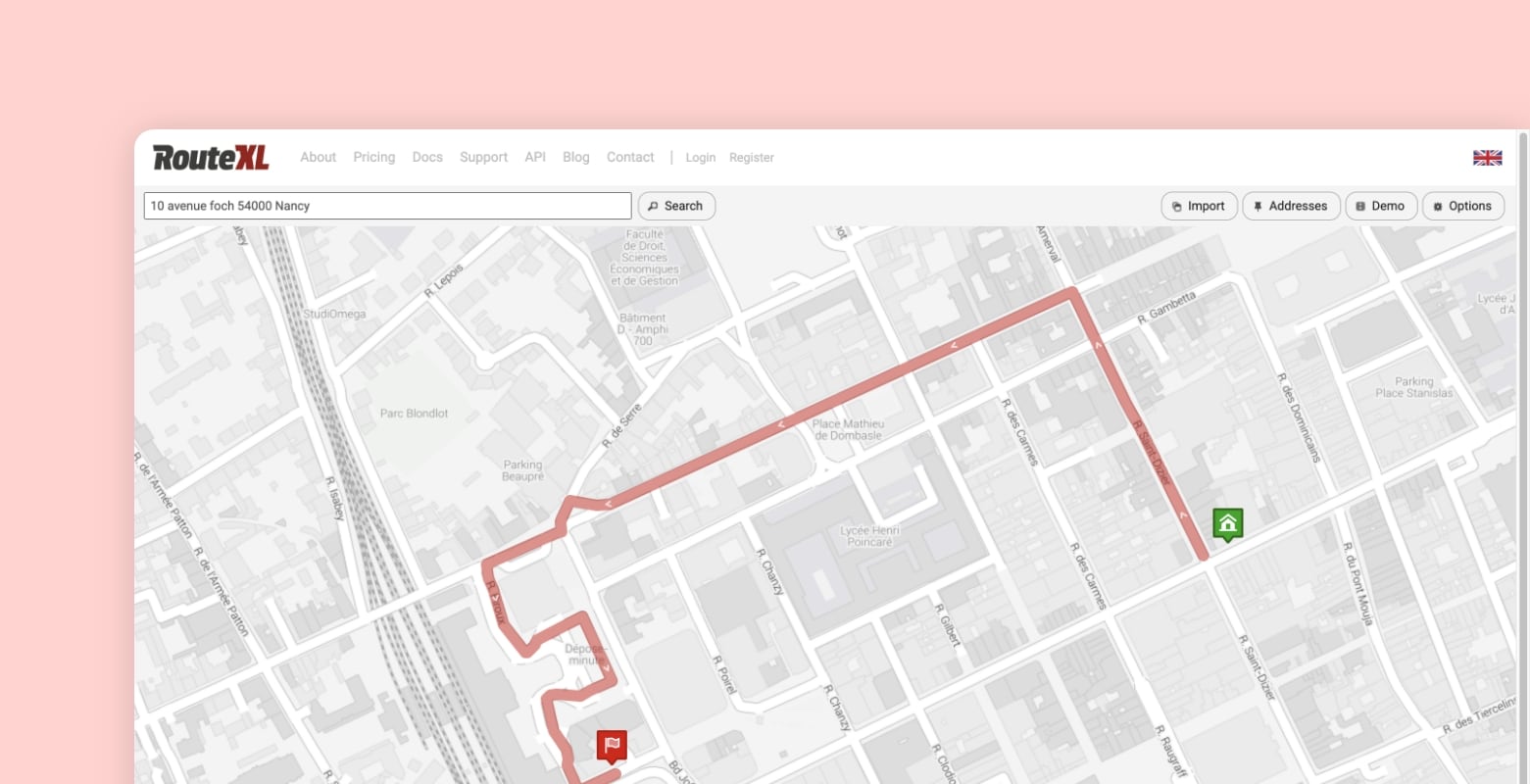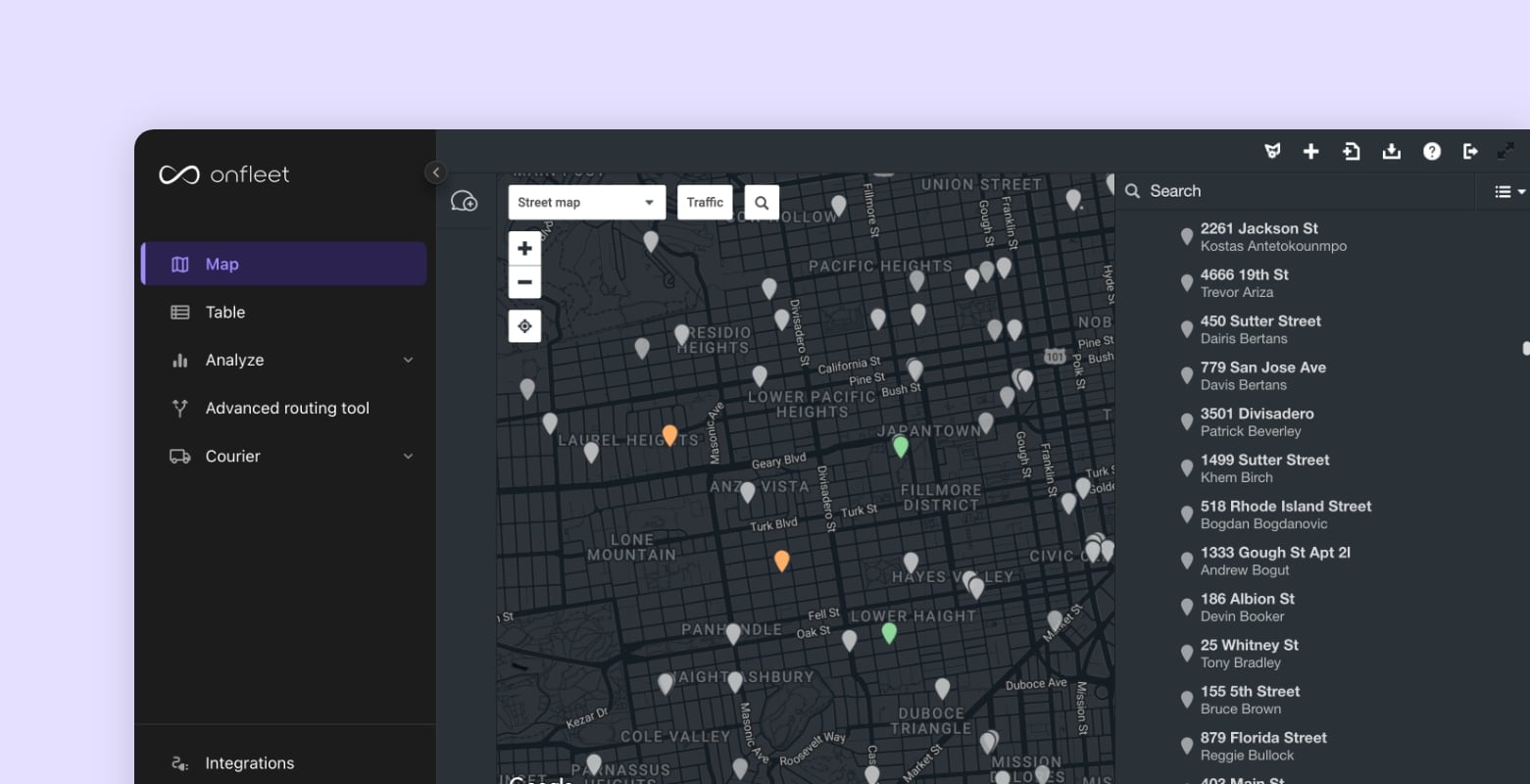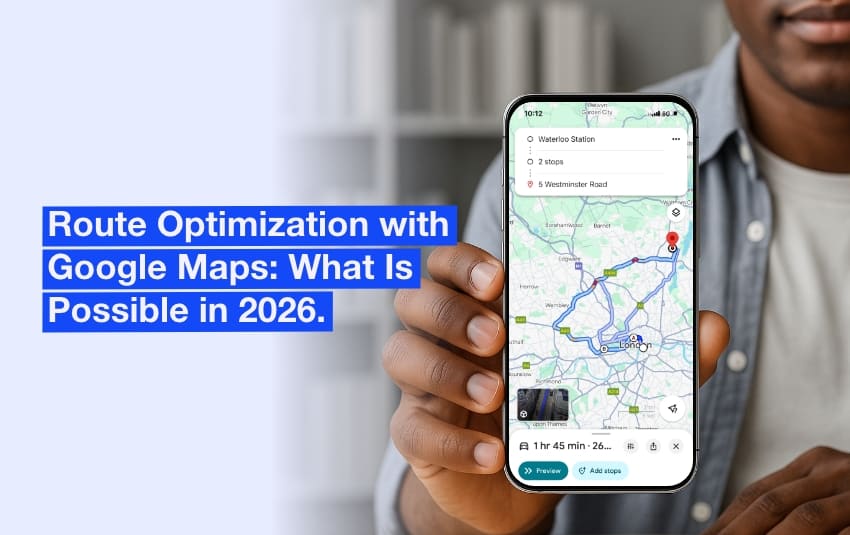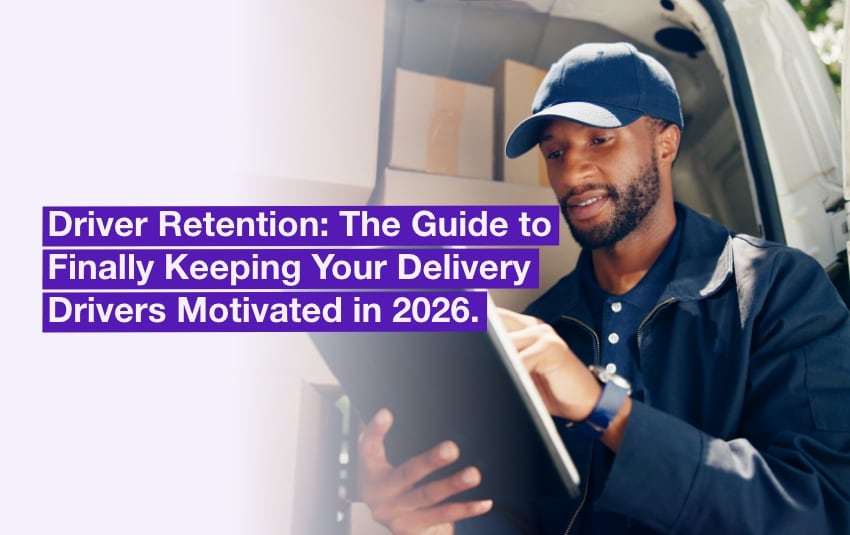Top 8 Best Route Optimization Software Solutions for 2025
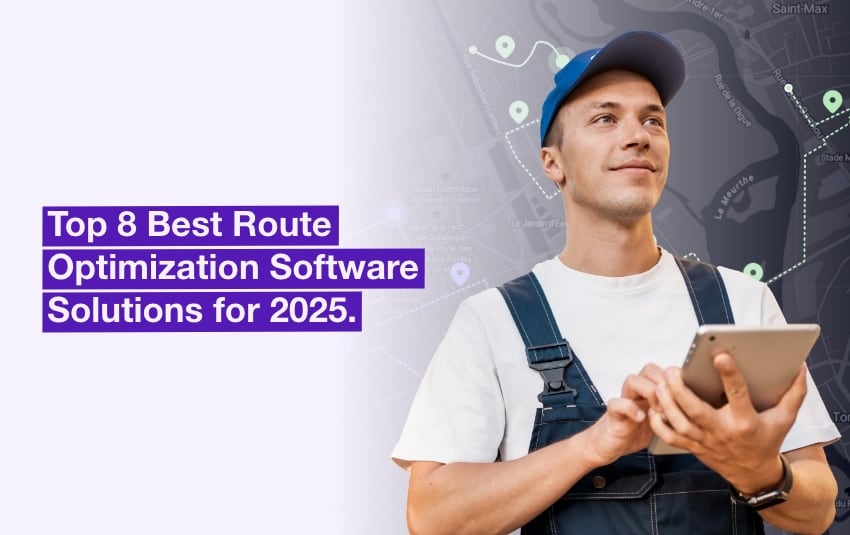
It’s 7 AM, and the city is already humming with activity. Delivery trucks weave through traffic, couriers scan their routes on mobile screens, and dispatchers sit in front of blinking monitors, trying to keep everything on track. For a logistics manager or a delivery driver, every minute lost in inefficiency means delayed shipments, frustrated customers, and higher fuel costs.
Now, imagine a world where your routes are optimized before you even turn the ignition key. No more second-guessing traffic conditions, no more wasted fuel on inefficient paths—just smooth, streamlined deliveries that keep businesses running and customers happy. That’s exactly what route optimization software brings.
In 2025, with fuel prices fluctuating, urban traffic congestion worsening, and customer expectations for fast delivery, having the right route optimization tool isn’t just an advantage—it’s a necessity. Whether you’re managing a nationwide logistics fleet or running local deliveries, the right software can save time, money, and frustration while keeping your customers satisfied.
But with so many options available, which route optimization software should you choose? In this guide, we’ll break down the top eight solutions for 2025, highlighting their features, benefits, and real-world applications. First, let’s take a closer look at what route optimization is and why it’s a game-changer for delivery operations.
Table of contents:
- What is route optimization software and why is it essential in 2025?
- Criteria for selecting the best route optimization software
- The Top 8 best route optimization software solutions for 2025
- Future trends in route optimization software
What is route optimization software and why is it essential in 2025?
Think of route optimization like a seasoned trucker who knows every backroad, shortcut, and traffic trick in the book. Instead of relying on years of experience or gut instinct, today’s logistics industry uses advanced algorithms, AI-driven analytics, and real-time data to find the most efficient routes—instantly.
At its core, route optimization software is designed to calculate the best possible routes based on multiple factors, including:
- Traffic conditions (both real-time and historical trends)
- Delivery time windows and customer preferences
- Vehicle capacity and fuel efficiency
- Road restrictions (weight limits, toll roads, etc.)
- Skills of drivers in some industries.
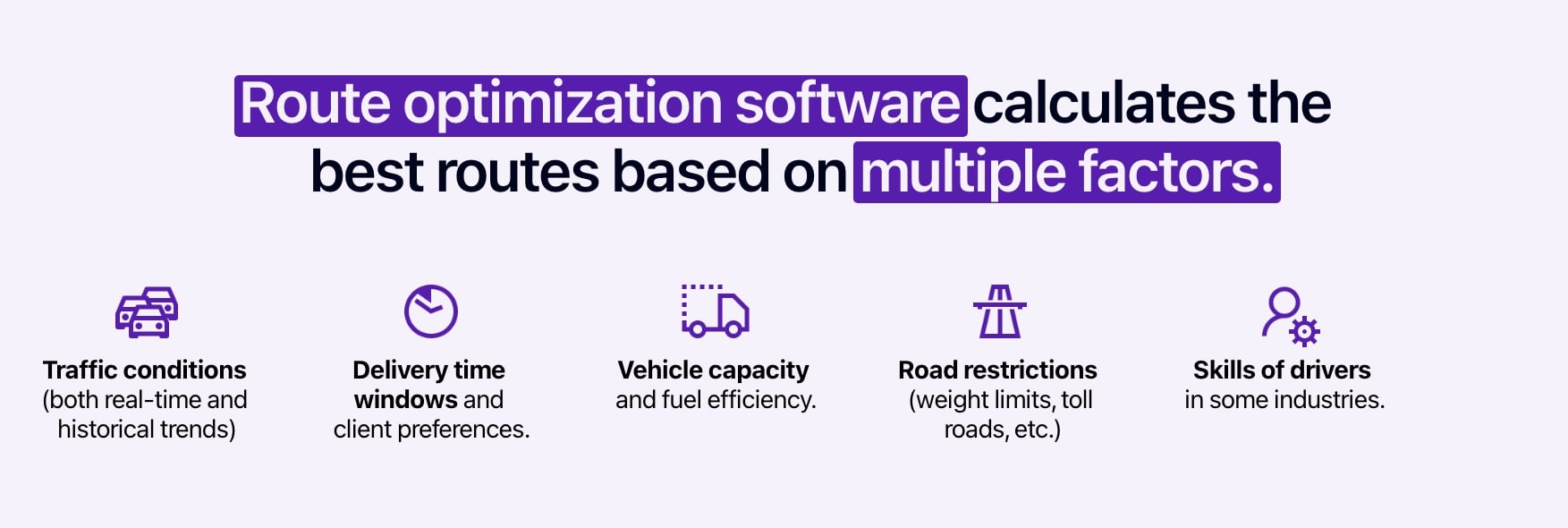
Factors taken into account by route optimization software.
❌ An example without route optimization
You’re a delivery driver with a tight schedule. Your first stop is across town, but you didn’t realize there was a major accident on the freeway—now you’re stuck in gridlock. By the time you finally arrive, your second stop is already overdue. Your dispatcher scrambles to adjust the remaining deliveries, but now the whole day is thrown off balance.
This is the reality for thousands of delivery teams without route optimization software. Time-sensitive deliveries get delayed, fuel costs spike, and drivers experience unnecessary stress, all because of outdated or inefficient routing methods.
✅ An example with route optimization
Now, let’s rewrite that same scenario with route optimization software in play. Before you even leave the warehouse, your system has already calculated the fastest and most fuel-efficient route, factoring in live traffic updates, road conditions, and delivery priorities. If an accident occurs on your path, the software dynamically adjusts your route in real-time, ensuring you stay on schedule.
For logistics managers, this means fewer headaches, better fuel economy, and happier customers. For drivers, it means less time spent in traffic and more time completing deliveries smoothly.
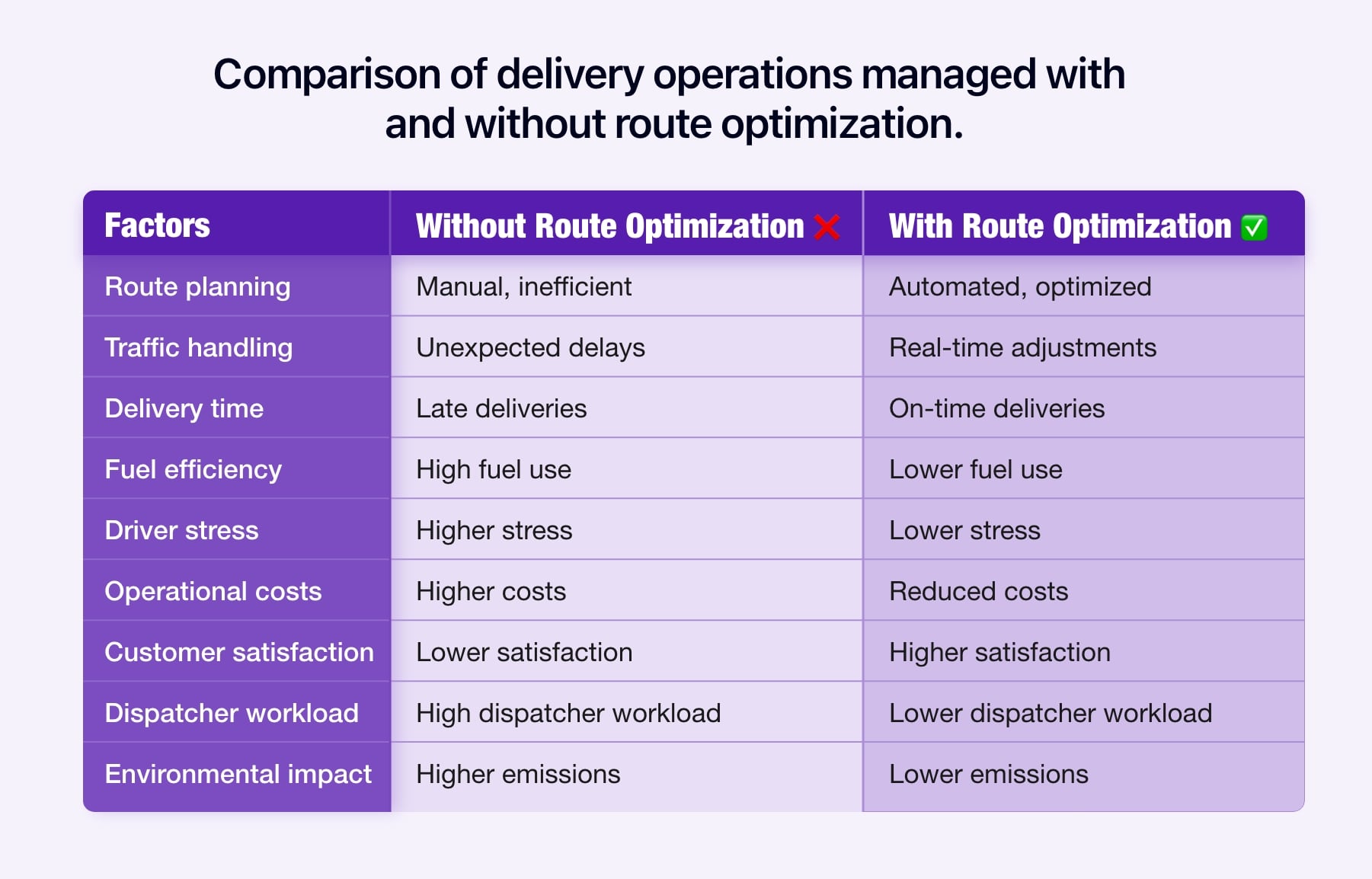
Comparison of delivery operations managed with and without route optimization.
Why 2025 is a pivotal year for route optimization?
With emerging trends like autonomous delivery vehicles, AI-driven dispatching, and sustainability regulations, the logistics landscape is evolving rapidly. Companies that fail to embrace smart routing solutions risk falling behind competitors who can deliver faster, cheaper, and more reliably.
As we explore the best route optimization software solutions for 2025, keep these key benefits in mind. The right choice could be the difference between an operation that thrives—and one that struggles to keep up.
Criteria for selecting the best route optimization software
Choosing the right route optimization software is like picking the perfect GPS for a long-haul journey—you need accuracy, reliability, and efficiency. But with so many options available, how do you determine which one fits your operation best?
To make the right choice, logistics managers and delivery drivers should consider these key factors:
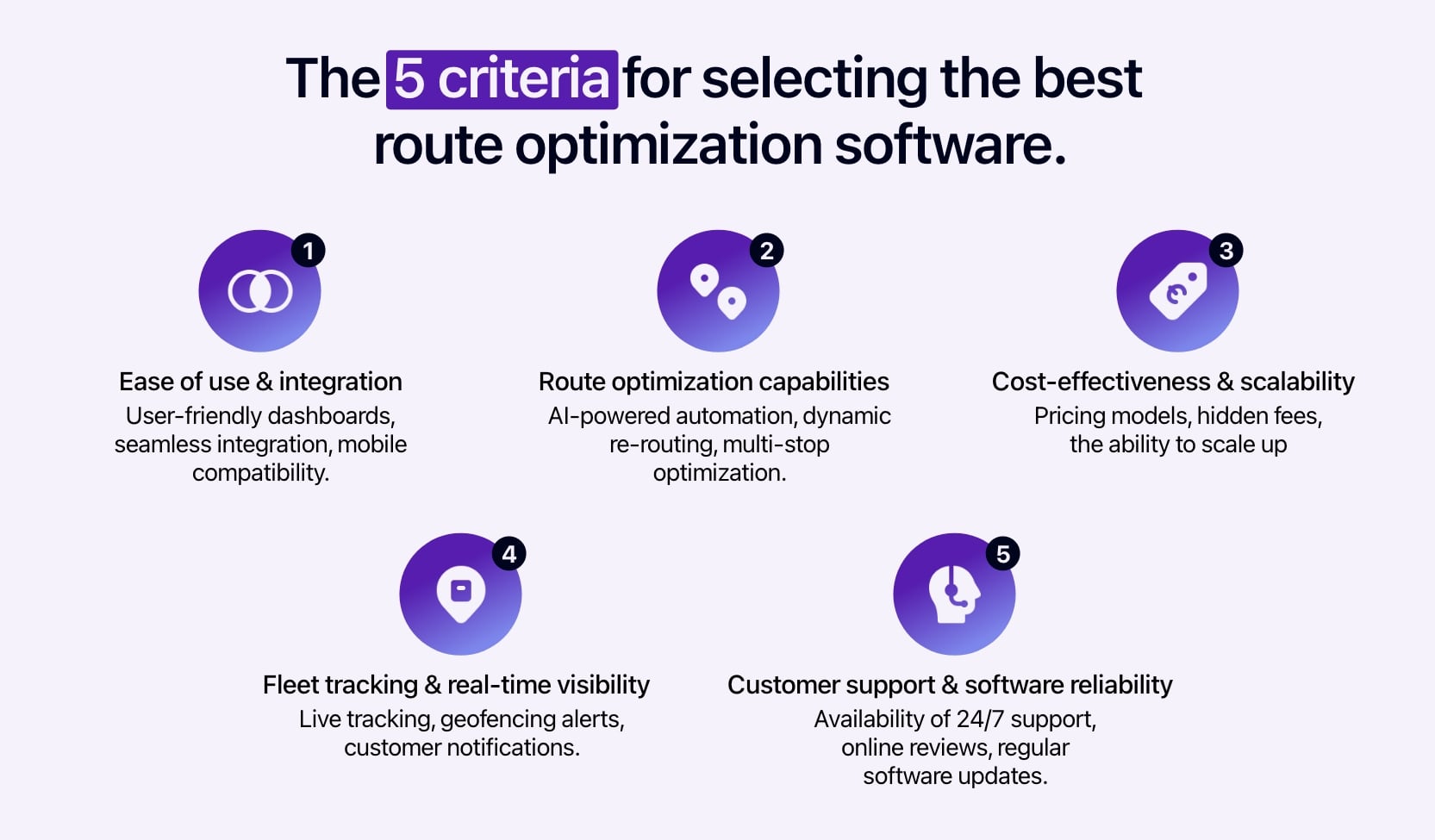
The 5 criteria for selecting the best route optimization software.
1. Ease of use & integration
A great route optimization tool should feel like an extra set of hands, not another headache. If the software requires weeks of training or disrupts existing workflows, it’s more of a burden than a solution. Look for:
- User-friendly dashboards that drivers and dispatchers can navigate easily.
- Seamless integration with existing fleet management, CRM, or dispatch systems.
- Mobile compatibility, ensuring drivers can access routes on the go.
Example: A mid-sized courier company switched to a software that integrated with their existing dispatch system, reducing onboarding time from weeks to days.
2. Route optimization capabilities
Not all route planners are created equal. Some simply map out a route, while others use AI and real-time data to adjust dynamically. Key features to look for:
- AI-powered automation that factors in traffic and delivery time windows.
- Dynamic re-routing to adjust for accidents, road closures or last-minute order.
- Multi-stop optimization for complex delivery schedules.
3. Cost-effectiveness & scalability
Whether you’re running a fleet of five vans or managing hundreds of trucks, the software should grow with your business. Consider:
- Pricing models (subscription-based, per vehicle, or per route).
- Hidden fees for additional features or integrations.
- The ability to scale up without significant costs or system overhauls.
4. Fleet tracking & real-time visibility
For logistics managers, real-time tracking isn’t just about knowing where a driver is—it’s about improving efficiency and customer satisfaction. Look for:
- Live tracking to monitor vehicles in real-time.
- Geofencing alerts for on-time deliveries and route deviations.
- Customer notifications, so clients know exactly when their packages will arrive.
Example: A delivery company using real-time tracking cut down customer complaints by 40% simply by providing accurate ETAs.
5. Customer support & software reliability
Even the best software can hit bumps in the road. When it does, responsive customer support makes all the difference. Before committing, check:
- Availability of 24/7 support, especially if running a high-volume operation.
- Online reviews about downtime or technical issues.
- Regular software updates to adapt to new industry challenges.
The Top 8 best route optimization software solutions for 2025
Now that we’ve established the key criteria for choosing route optimization software, let’s dive into the top eight solutions for 2025. These platforms stand out for their efficiency, advanced features, and real-world impact on delivery operations.
Each software listed below caters to different needs, whether you’re an independent driver, a small courier business, or managing a large logistics fleet.
1. OptimoRoute
Pricing: From $35.10 per driver per month
Mobile app: Available on Android and iOS
Capterra rating: 4.6 / 5 (181 reviews)
OptimoRoute is a robust route planning tool. The solution offers an extensive set of features with an ergonomic interface. Apart from route planning, OptimoRoute can help you with route optimisation and factor in location, delivery slots and more. It also has a live tracking feature to follow your drivers’ journeys and will give automatic status updates to customers. You can import your orders from a CSV or Excel file or synchronise your systems thanks to the API integration.
✅ Advantages:
- The tool allows a lot of flexibility to set up the routes as you need.
- A large set of features are available.
❌ Disadvantages:
- On the expensive side – limitations of drivers based on the price.
- Appears to take some time to learn and understand.
What users think about OptimoRoute:
“We can easily create a delivery route and adjust the delivery time to meet the customer’s preferences.” – Review from Capterra.
“OptimoRoute has helped us streamline our pick-up and delivery service. We are a small business, usually just sending out one truck a day that makes multiple stops. The app continually updates delivery times throughout the day. We are able to track our driver without having to call.” – Review from Capterra.
2. AntsRoute
Pricing: From €34 per driver per month
Mobile app: Available on Android and iOS
Capterra rating: 4.2 / 5 (12 reviews)
At AntsRoute we provide a comprehensive platform for managing last mile field services and delivery operations. It can easily optimise routes, improve productivity and make the day-to-day work of the field staff much easier. Our software offers a wide range of features such as route management, field workforce tracking or a booking site enabling the final client book a delivery 24/7.
It is designed to meet the needs of all industries and all sizes of businesses. Our solution will improve your customer satisfaction thanks to automated notifications, the possibility to confirm or reschedule a visit, track the driver in real-time thanks to geotracking and send a delivery report to the customer with the proof of delivery.
✅ Advantages:
- Very easy to implement and simple to use. Great adherence to the tool by the drivers.
- Features designed to make your deliveries more environmentally efficient, helping you in your CO2 emissions reduction and achieve your CSR goals.
- The tool and customer support are available in English, French Spanish, German, and Italian making it easier to coordinate with your international teams.
❌ Disadvantages:
- No free version, only a free trial is available.
What users think about AntsRoute:
“Very easy-to-use software, for both management/planning and field operations. They have developed their tools over time to meet their customers’ expectations as closely as possible.” – Review from Capterra.
“Our teams have been using AntsRoute for over six months. I highly recommend this software, which is easy to set up, pleasant to use and very efficient. The tool offers numerous features for managing our delivery routes. For example, we can import a file with all the stages to be planned and optimize our routes in a matter of moments. Thanks to the mobile application, our delivery drivers can follow their routes and validate each stage with photos, comments and even the customer’s signature. Our customers particularly appreciate AntsRoute’s notification system. For example, they can track the driver’s arrival in real time and know the precise time of arrival at their home.” – Review from Capterra.
3. Route4me
Pricing: From €54 per user per month (minimum of 5 users)
Mobile app: Available on Android and iOS
Capterra rating: 4.4 / 5 (390 reviews)
Route4me is one of the first route optimisation software launched on the market.It’s a complex tool with a well-developed marketplace of add-on features, making it adaptable to your needs. For example, you can add on support for curbside pickup, avoiding left or right turns, or for allocating stops to time windows. Among the key features:
- Dynamic route optimization with GPS tracking.
- Multi-stop and multi-vehicle route planning.
- Integration with telematics and fleet management systems.
✅ Advantages:
- Great for teams of up to 10 drivers.
- Routes can be shared among teams.
- The tool is built based on your needs.
❌ Disadvantages:
- One of the most expensive solutions in the market.
- Best adapted for bigger teams and not individual drivers.
What users think about Route4me:
“Customer service has been amazing. They are available by phone, chat or email. Response is quick and helpful. Loading new routes is fast and easy to navigate.” – Review from Capterra.
“I really like that this route is the most efficient way to go from one stop to the next on my daily routes and if I run into a problem customer support is very quick to correct a problem on the map.” – Review from Capterra.
4. Track-POD
Pricing: From $29 per driver per month (minimum of 3 drivers)
Mobile app: Available on Android and iOS
Capterra rating: 4.6 / 5 (137 reviews)
Track-POD was originally an electronic Proof of delivery tool, making it the leader in the market. Track-POD developed its offer to best suit its clients’ needs and now offers an App for drivers and managers for route optimisation. The key features of this solution are:
- AI-powered route optimization for efficient multi-stop deliveries.
- Contactless proof of delivery with e-signatures and photo confirmation.
- Real-time driver tracking and automated customer notifications.
- API integrations with ERP, CRM, and e-commerce platforms.
✅ Advantages:
- Good quality for value.
- A simple solution that will be easy to implement by management.
❌ Disadvantages:
- Integrations are only possible with the more expensive pricing plans.
- The cheapest plan only offers the Proof of delivery feature.
What users think about Track-Pod:
“Very easy to use with an increasing number of functions and good customer service. Very little downtime or glitches. Over the last 2-3 years we’ve seen a lot of development of the software and new functions come in which gives us real faith in the platform being constantly progressed to meet our needs.” – Review from Capterra.
“The optimization of routes and the sending of PDF documents have been very useful for our company, with these functions we have obtained greater efficiency in deliveries and at the same time we offer a transparent service to our clients since they are notified in real time and obtain a backup of delivery and payment with PDF document” – Review from Capterra
5. Circuit
Pricing: $20 for individual drivers per month, from $100 for 500 stops a month
Mobile app: Available on Android and iOS
Capterra rating: 4.8 / 5 (101 reviews)
Circuit is an effective route optimisation tool with a route planner solution for individual drivers and one with more features like proof of delivery, and automatic customer notifications for teams. The solution also offers a package finder solution that enables you to know where the package is located in the vehicle. The key functions include:
- Easy-to-use interface designed for solo drivers.
- Stop prioritization based on urgency and traffic.
- Route customization with drag-and-drop adjustments.
✅ Advantages:
- Free for up to 10 stops
- An accessible solution for very small business who want to try a simple route optimisation software.
❌ Disadvantages:
- You can’t edit, tweak or change the route assigned to drivers.
- The Individual Driver pricing package doesn’t offer a lot of features.
- The proof of delivery is only available in the second pricing package.
What users think about Circuit:
“I like the fact that we can input our entire day of deliveries and optimize how our day goes based on our clients needs in the most effective way possible.” – Review from Capterra
“We like having a simple app to create routes for our local deliveries each week. The basic plan is sufficient for 1-2 days delivery, 4-30 orders.” – Review from Capterra
6. MyRouteOnline
Pricing: From $49 for 500 stops a month
Mobile app: Available on Android and iOS
Capterra rating: 4.6 / 5 (111 reviews)
MyRouteOnline is a simple tool that allows you to upload postcodes in an Excel format in order to get the route planner. You can then export it and navigate with Google Maps or Waze. Here are the key features:
- Converts addresses into optimized routes with multiple stops.
- Simple drag-and-drop interface with easy route adjustments.
- Supports Excel imports for bulk address uploads.
✅ Advantages:
- Very easy to use.
- An efficient tool if your concern is only route planning.
❌ Disadvantages:
- Limited features available.
- The price is a little high compared to other solutions offering more features.
What users think about MyRouteOnline:
“Keeping track and marking off destinations was a hassle for my drivers, this allows us to track and optimize their route in a super simple fashion!” – Review from Capterra
“This was a major time saving program for mapping, step by step driving directions, and route planning for our organizational needs. I have used this program several times over the past few years and found it to be most valuable. I was exceptionally easy to add needed stops by viewing the maps provided by the program and determining the area each group would be visiting enabling additional stops to be effective.” – Review from Capterra
7. Route XL
Pricing: Free up to 20 stops per route, €35 up to 100 stops per route.
Mobile app: not available
Capterra rating: 3.5 / 5 (2 reviews)
Route XL is a very simple route planner solution. All you have to do is import or manually add your departure location and all destinations to the map, and the route is calculated. The route is then available to print or to integrate into a navigation app. The key functions include:
- Generates optimized multi-stop routes with just a few clicks.
- Supports bulk address input via CSV or spreadsheet uploads.
✅ Advantages:
- Very basic route planner solution.
- Free solution for up to 20 stops per route.
❌ Disadvantages:
- No other features are available.
- No mobile app.
What users think about Route XL:
“Free! How can you beat that? Also, the software has the ability to add multiple stops and locations. It also has the ability to save previous routes and add details to each stop. Overall, RouteXL is very comprehensive.” – Review from Capterra
8. Onfleet
Pricing: From $599 per month for 2,500 delivery or pickup tasks.
Mobile app: Available on Android and iOS
Capterra rating: 4.6 / 5 (93 reviews)
Onfleet is an advanced last-mile delivery software that combines route optimization with real-time driver tracking and customer communication. It is widely used in retail, food delivery, and medical logistics. The key features are:
- Smart dispatching and AI-powered route optimization.
- Live GPS tracking with customer notifications and ETAs.
- Proof of delivery (POD) with electronic signatures and photos.
- Driver performance analytics to optimize efficiency.
✅ Advantages:
- User-friendly interface with intuitive navigation.
- Strong real-time tracking and customer communication tools.
- Seamless integration with e-commerce, dispatch, and CRM platforms.
❌ Disadvantages:
- Higher pricing compared to other options, making it less ideal for small businesses.
- Primarily designed for last-mile delivery, not suitable for long-haul trucking.
What users think about Onfleet:
“Easy to use. Helps manage where my fleet is at. Gives me up to the minute updates. I also like the way our customer/s can track the progress of our truck to their job site. Easy to add or delete tasks. Or add or remove users.” – Review from Capterra
“It is much easier for us now to make routes and manage our drivers, and to see where drivers are when customers call in asking how long it might take for them to receive their delivery.” – Review from Capterra
Comparative table of the best route optimization software in 2025:
| Software | Key features | Pricing | Advantages | Disadvantages |
| OptimoRoute | AI-driven route optimization. Real-time tracking. Multi-day and multi-driver route planning. |
From $35.10 per driver per month. | Flexibility to set up the routes. Many features available. |
Limitations of drivers based on the price. It takes time to understand. |
| AntsRoute | AI-driven route planning with real-time adjustments. Smart scheduling with time windows and customer preferences. Performance analytics to track delivery efficiency. |
From €34 per driver per month. | Easy to implement and simple to use. Features designed for green routing planning. Efficient customer support. |
No free version. |
| Route4me | Dynamic route optimization with GPS tracking. Multi-stop and multi-vehicle route planning. Integration with telematics and fleet management systems. |
From €54 per user per month (min. 5 users) | Great for teams of up to 10 drivers. Routes sharing among teams. Adaptative tool. |
Expensive solutions. Adapted for bigger teams and not individual drivers. |
| Track-POD | AI-driven route planning with real-time tracking. Contactless proof of delivery (e-signatures & photo confirmation). API integrations with ERP, CRM, and e-commerce platforms. |
From $29 per driver per month (min. 3 drivers) | Good quality for value. Easy to implement. |
Limited customization options. Pricing is high for small businesses. |
| Circuit | Stop prioritization based on urgency and traffic conditions. Route customization with drag-and-drop adjustments. Mobile-friendly design for on-the-go access. |
$20 for individual drivers per month, from $100 for 500 stops a month | Free for up to 10 stops Accessible for very small business. |
Individual driver pricing package doesn’t offer a lot of features. POD is only available in the second pricing package. |
| MyRouteOnline | Converts addresses into optimized routes with multiple stops. Simple drag-and-drop interface with easy route adjustments. Supports Excel imports for bulk. |
From $49 for 500 stops a month | Easy to use. Efficient tool if your concern is only route planning. |
Limited features. Higher prices compared with other solutions. |
| RouteXL | Generates optimized multi-stop routes with just a few clicks. Supports bulk address input via CSV or spreadsheet uploads. Affordable pricing with a free version for up to 20 stops. |
Free up to 20 stops per route, €35 up to 100 stops per route. | Basic route planner solution. Free for up to 20 stops per route. |
Only route planning. No mobile app. |
| Onfleet | Smart dispatching with real-time ETA adjustments. POD with electronic signatures and photos. Live GPS tracking with automated customer notifications. |
From $599 per month for 2,500 delivery or pickup tasks. | User-friendly interface. Strong real-time tracking tools. Seamless integration. |
Higher pricing compared to other options. Not suitable for long-haul trucking. |
Future trends in route optimization software
As we move further into 2025, the landscape of route optimization software is evolving rapidly. Advances in artificial intelligence (AI), automation, and sustainability initiatives are shaping the way logistics managers and delivery drivers optimize routes, reduce costs, and enhance efficiency. Here are the key trends to watch in the coming years:
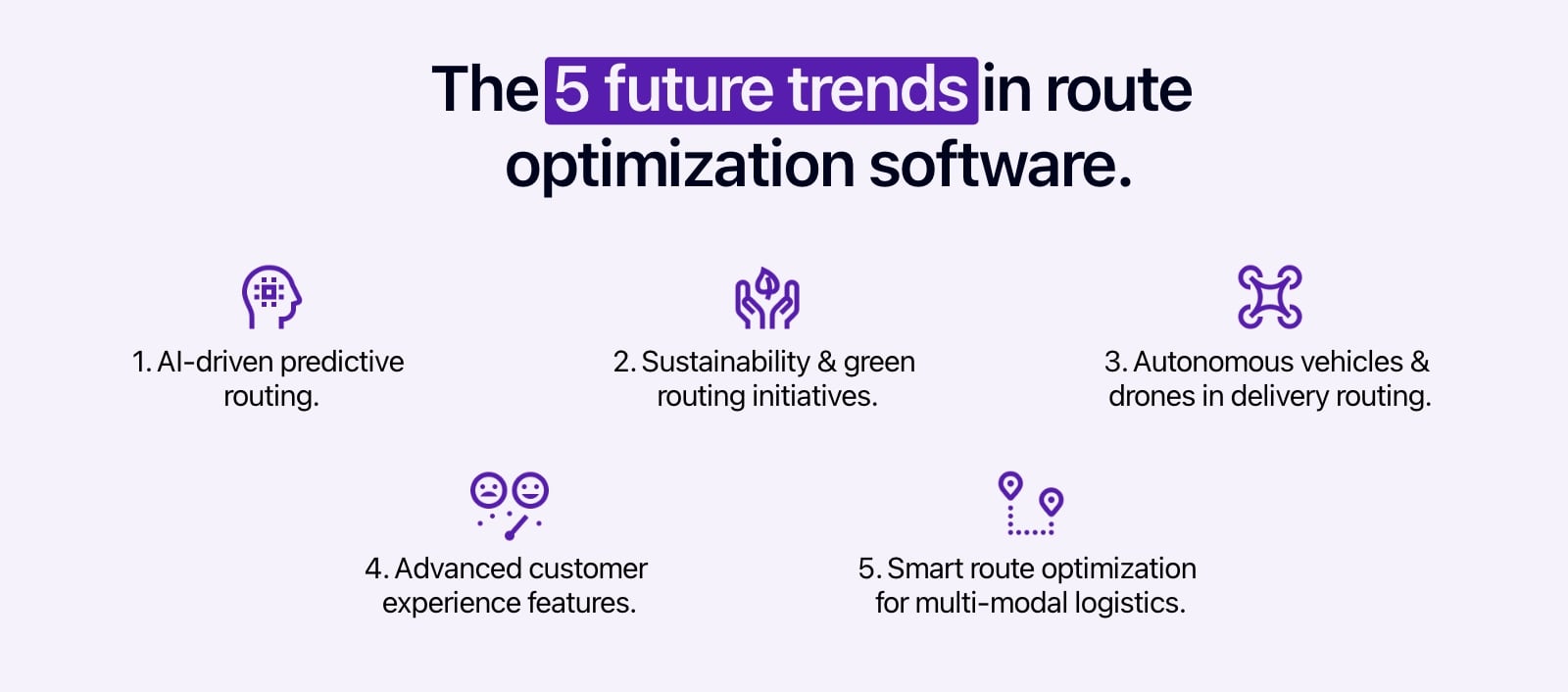
The 5 future trends in route optimization software.
1. AI-driven predictive routing
Route optimization software is no longer just about finding the fastest way from Point A to Point B—it’s about predicting what will happen along the way. So what’s changing:
- AI-driven systems now analyze historical traffic patterns, weather forecasts, and live road conditions to predict the best routes before problems even occur.
- Machine learning algorithms continuously improve route recommendations based on real-world data, making deliveries more efficient over time.
- Dynamic route planning and re-routing automatically adjusts paths mid-route to avoid delays, ensuring on-time deliveries even in unpredictable conditions.
For example: Logistics companies are integrating AI-driven route planning tools like AntsRoute, which learn from past deliveries and adjust future routes for maximum efficiency.
2. Sustainability & green routing initiatives
With increasing regulations around carbon emissions and rising fuel costs, logistics companies are turning to eco-friendly routing solutions to optimize fuel efficiency and reduce environmental impact:
- Carbon footprint tracking in routing software helps businesses measure their environmental impact.
- Electric vehicle (EV) fleet integration ensures that delivery companies maximize battery range and efficiency.
- AI-based fuel-efficient routing prioritizes roads that use less fuel and produce fewer emissions.
For example, AntsRoute allows you to track the quantities of CO2 emitted in total and for each route. In addition, this solution can be used to optimize routes for electric vehicle fleets.
3. Autonomous vehicles & drones in delivery routing
With rapid advancements in autonomous vehicles and drone delivery, route optimization software is evolving to manage fleets that don’t rely on human drivers.
- Self-driving delivery vans will rely on AI-powered route optimization to avoid traffic, make efficient stops, and comply with local regulations.
- Drones for last-mile deliveries are being integrated into delivery routing platforms, especially in urban and remote areas.
- Hybrid routing solutions are emerging, combining traditional delivery fleets with autonomous and drone-based deliveries.
Companies like Amazon and UPS are already testing AI-powered drone delivery systems, and route optimization software will play a key role in managing these autonomous logistics networks.
4. Advanced customer experience features
Customers today expect real-time tracking, accurate ETAs, and seamless delivery experiences. Route optimization software is evolving to enhance customer satisfaction with better communication tools. It includes:
- Real-time notifications provide customers with live ETAs and updates on delays.
- Two-way communication allows customers to interact with drivers through messaging platforms.
- AI-based delivery window optimization reduces failed deliveries by ensuring customers are home at the right time.
For example, Onfleet, AntsRoute, and Track-Pod have introduced enhanced customer tracking and notifications, allowing recipients to see their deliveries approaching in real time.
5. Smart route optimization for multi-modal logistics
Many logistics companies now use a mix of trucks, vans, and bicycles to optimize last-mile deliveries. Route optimization software is adapting to manage multi-modal logistics networks efficiently.
- Intelligent mode selection allows logistics managers to assign deliveries to the most efficient transportation method.
- Seamless coordination between trucks, bikes, drones, and last-mile couriers.
- AI-powered decision-making balances costs, delivery speed, and environmental impact
Companies like RouteXL and AntsRoute allow businesses to optimize multi-modal deliveries, ensuring that the right vehicle is used for the right job.
What this trends mean for Logistics Managers & Delivery Drivers?
The future of route optimization software is more than just finding the shortest path—it’s about creating an intelligent, responsive, and sustainable logistics system that adapts to real-world challenges.
- ✅ For logistics managers: These advancements mean lower costs, increased efficiency, and improved customer satisfaction.
- ✅ For delivery drivers: Expect less time stuck in traffic, better job efficiency, and real-time support to navigate unexpected issues.
In 2025, route optimization software is no longer just a nice-to-have—it’s a necessity for logistics managers and delivery drivers looking to increase efficiency, cut costs, and enhance customer satisfaction. With the rise of AI-driven routing, real-time traffic integration, sustainability initiatives, and autonomous delivery advancements, companies that fail to adopt smart routing solutions risk falling behind.
Whether you’re a small business, an independent driver, or managing a large fleet, the right route optimization software can dramatically improve your operations.
Frequently Asked Questions (FAQ)
Route optimization software uses AI algorithms, real-time traffic data, and historical route analysis to determine the most efficient delivery paths. It considers factors like traffic congestion, weather conditions, delivery time windows, vehicle capacity, and road restrictions to ensure drivers take the best possible route while reducing fuel costs and delivery times. For example, if a major traffic jam occurs on your original route, the software automatically reroutes drivers to an alternate, faster path.
Implementing route optimization software can bring multiple benefits:
- Cost Savings – Reduces fuel consumption and overtime labor costs.
- Time efficiency – Ensures deliveries are completed faster and more accurately.
- Customer satisfaction – Provides real-time tracking, automated ETA notifications, and proof of delivery.
- Scalability – Supports growing fleets and expanding delivery networks.
- Sustainability – Lowers carbon footprint by reducing unnecessary driving distances.
Any business involved in transportation, delivery, or field services can benefit, including:
- Courier & parcel delivery services – Ensures fast and cost-effective deliveries.
- Food delivery businesses – Optimizes last-mile delivery for restaurants and grocery stores.
- Medical & pharmaceutical logistics – Ensures timely delivery of medical supplies.
- Field Service & maintenance teams – Optimizes technician routes for service calls.
- Retail & e-commerce businesses – Improves customer experience with faster shipping.
When selecting a route optimization tool, consider:
- Business size & needs – Small businesses may prefer RouteXL, Circuit or AntsRoute, while large enterprises might benefit from Route4Me, Track-Pod, or even AntsRoute.
- Real-time features – Ensure the software includes live tracking, ETA notifications, and re-routing to adapt to unexpected changes.
- Integration capabilities – Choose a platform that integrates with your CRM, dispatching software, or fleet management system.
- Budget & pricing model – Compare subscription costs, per-route fees, and scalability options to find the best fit.
Free 7-day trial | No credit card required
Contenu
- What is route optimization software and why is it essential in 2025?
- ❌ An example without route optimization
- ✅ An example with route optimization
- Why 2025 is a pivotal year for route optimization?
- Criteria for selecting the best route optimization software
- 1. Ease of use & integration
- 2. Route optimization capabilities
- 3. Cost-effectiveness & scalability
- 4. Fleet tracking & real-time visibility
- 5. Customer support & software reliability
- The Top 8 best route optimization software solutions for 2025
- 1. OptimoRoute
- 2. AntsRoute
- 3. Route4me
- 4. Track-POD
- 5. Circuit
- 6. MyRouteOnline
- 7. Route XL
- 8. Onfleet
- Future trends in route optimization software
- 1. AI-driven predictive routing
- 2. Sustainability & green routing initiatives
- 3. Autonomous vehicles & drones in delivery routing
- 4. Advanced customer experience features
- 5. Smart route optimization for multi-modal logistics
- What this trends mean for Logistics Managers & Delivery Drivers?
- Frequently Asked Questions (FAQ)




